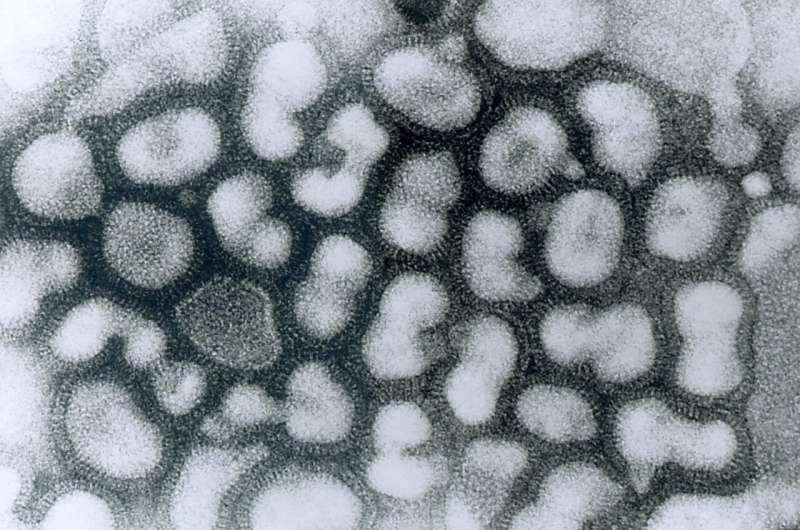February 21, 2020 report
Adding an adjuvant boosts vaccines ability to fight multiple flu strains

A team of researchers from Massachusetts General Hospital, The First Affiliated Hospital of Sun Yat-Sen University and Fudan University has found that adding a certain adjuvant to a vaccine increased its ability to fight multiple strains of influenza. In their paper published in the journal Science, the group describes using lipid components of a pulmonary surfactant to encapsulate the adjuvant to allow lung-resident alveolar macrophages to recognize it. Susanne Herold and Leif-Erik Sander with the Universities of Giessen and Marburg Lung Center and the Berlin Institute of Health, respectively, have published a Perspective piece describing the work by the team in the same journal edition.
In the current strategy for creating flu vaccines, health officials in several countries study outbreak patterns of various strains and then create vaccines against those that seem most likely to develop into an outbreak in a given country. The process is repeated on a seasonal cycle, with new vaccines created every year. What would be better, of course, would be a single vaccine to prevent outbreaks of all of the strains that might pose a threat. Such a vaccine is not yet available, but scientists are working hard to develop one. In this new effort, the researchers have come a step closer with a new approach to using an inactivated virus to trick the immune system into activating a stronger immune response than it normally would when any strain of flu is detected. Thus far, it has worked as planned in mice and ferrets.
The new approach involved combining an inactivated virus with 2′,3′-cyclic guanosine monophosphate–adenosine monophosphate (cGAMP)—a known immune response activator. But to keep the body from overreacting, the researchers covered it in a lipid from a pulmonary surfactant. The two components were then mixed into a nasal spray. Using this approach, the researchers found that the PS-GAMP nanoparticles were pulled into alveolar macrophages, which then transferred them to an innate immune sensor stimulator of interferon genes, activating them. That allowed the immune system to better defend against all five of the flu strains tested.
More information: Ji Wang et al. Pulmonary surfactant–biomimetic nanoparticles potentiate heterosubtypic influenza immunity, Science (2020). DOI: 10.1126/science.aau0810
© 2020 Science X Network



















